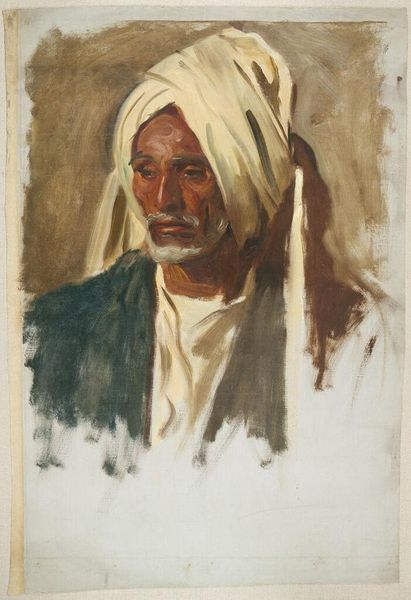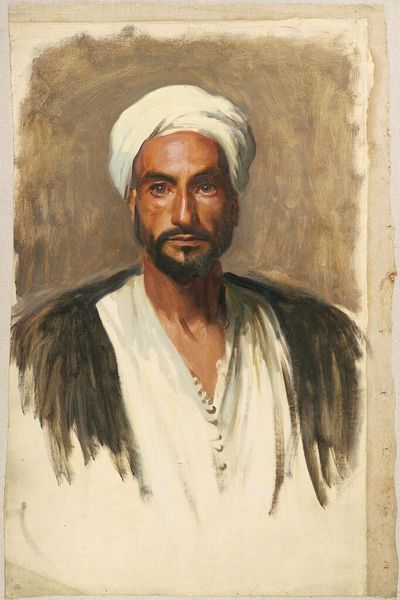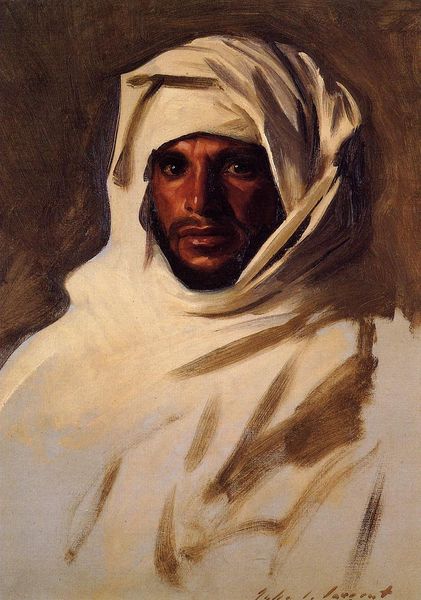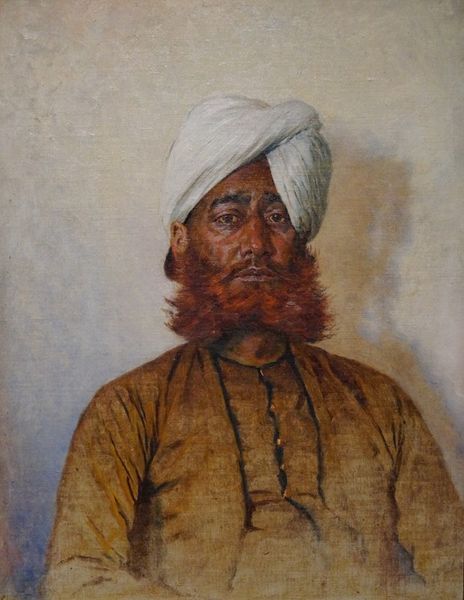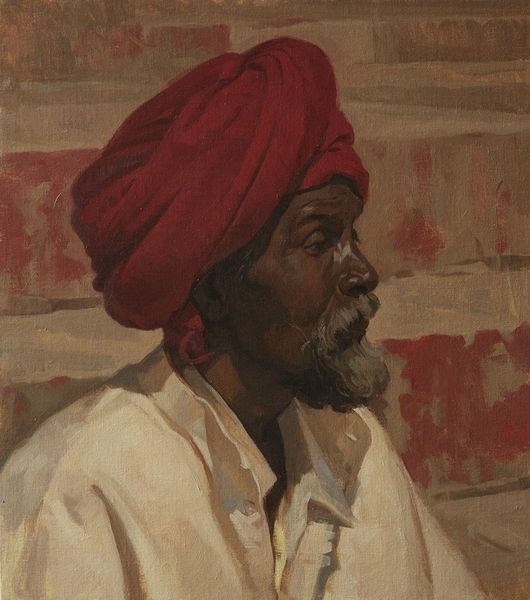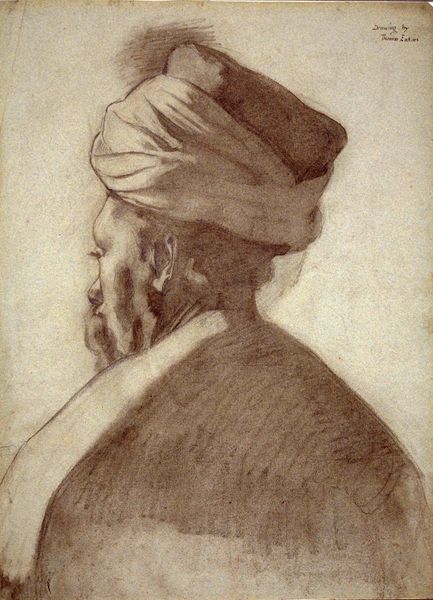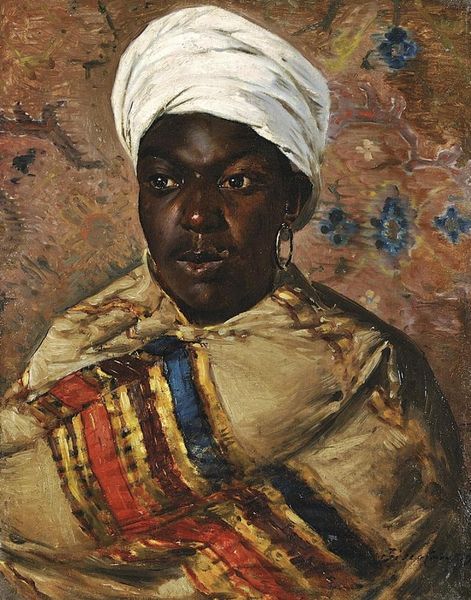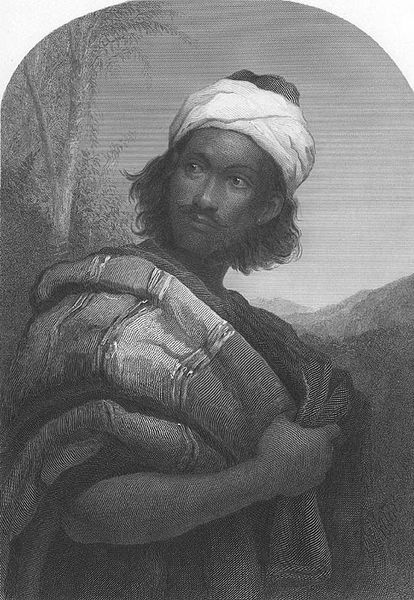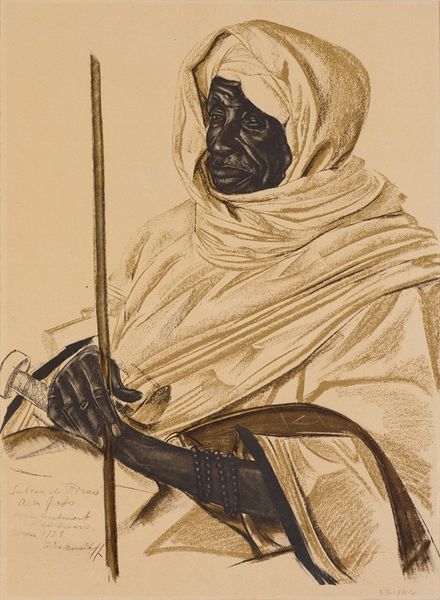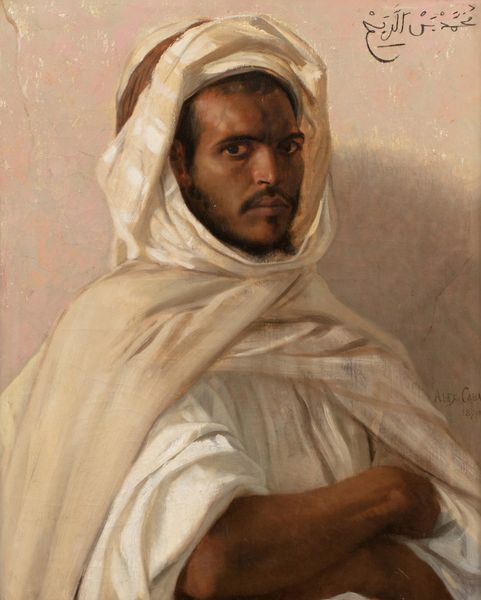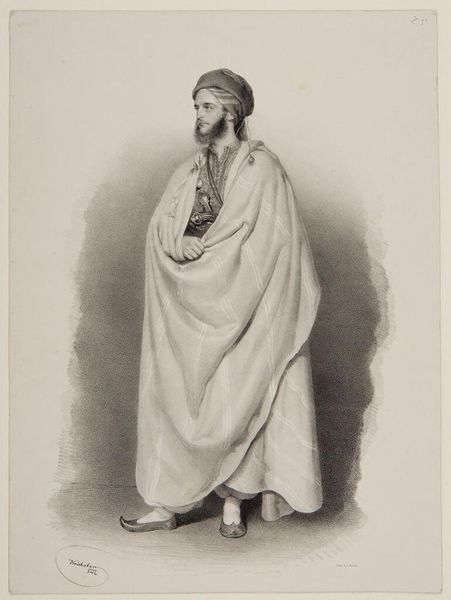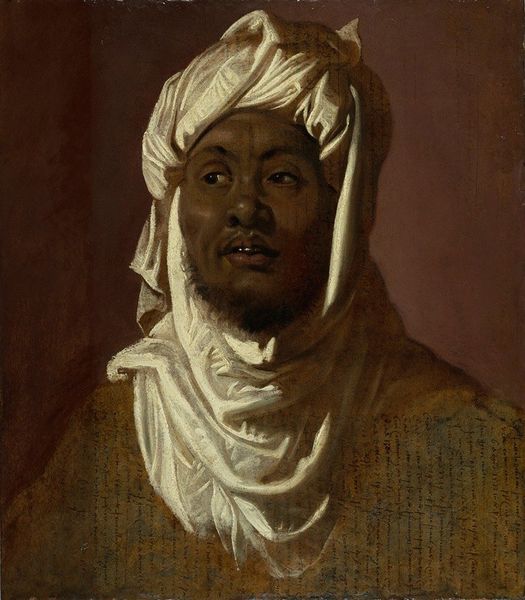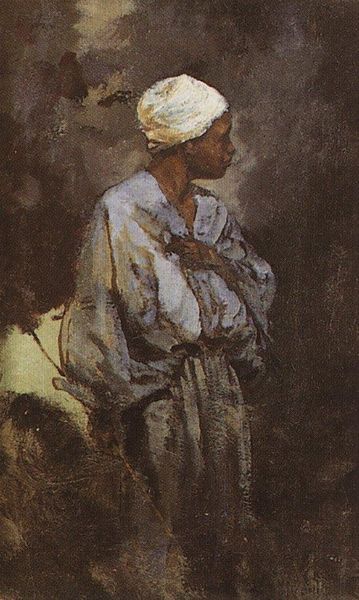
Copyright: Public domain
Vasily Vereshchagin painted this oil study of a Bhil man during his travels in India in the 1870s. Vereshchagin was a Russian artist known for his war paintings and his ethnographic studies of different cultures. This image, like many portraits, invites us to contemplate the relationship between the artist and the sitter, and the power dynamics inherent in that relationship. During the 19th century, European artists often traveled to other parts of the world to document what they saw. These images, while seemingly objective, were often filtered through the lens of European colonialism. The Bhil people, an indigenous group in India, were often marginalized and misrepresented in colonial accounts. This study, therefore, exists within a broader context of colonial representation and the power of the European gaze. The image raises questions about the artist's intentions, the subject's agency, and the historical context in which it was created. To understand it better, we can turn to travel literature, colonial archives, and studies of the Bhil people themselves. The meaning of this art is not fixed but emerges from the historical and institutional conditions of its production and reception.
Comments
No comments
Be the first to comment and join the conversation on the ultimate creative platform.
